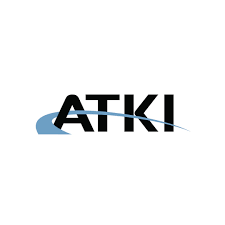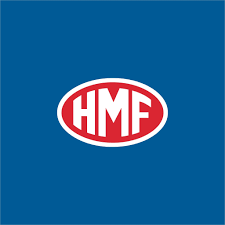Via Goldman Sachs’ Jan Hatzius,
News about the spread of the Ebola virus has increasingly been a focus for market participants in recent days. Prompted by client questions, our equity analysts have written on the effect of Ebola on airline stocks in the US and Europe, as well as hotel and cruise line stocks. The most important cost of the Ebola outbreak in West Africa has been the tragic and rising loss of human lives. In today’s Daily, however, we focus on the potential for broader US macroeconomic effects of Ebola fears.
Exhibit 1 shows that public concern about Ebola—as reflected in Google searches—spiked around the time the WHO declared an Ebola emergency in August and again after the first case was reported in the US at the end of September. However, despite rising public interest in the disease, there has been no discernible effect on high frequency measures of consumer sentiment. The daily Rasmussen confidence index has been relatively range-bound since early September. The daily economic confidence index from Gallup (not shown) has actually risen over this period.
Despite limited impact on consumer sentiment to date, the “fear factor” associated with Ebola appears more significant than past instances of pandemic concern. A recent Gallup poll revealed that 22% of Americans worried about personally contracting the disease. This is similar to the percent of respondents who worried about contracting the swine flu virus in 2009, even though the number of confirmed cases of swine flu in the US was orders of magnitude higher at that time. A recent Washington Post-ABC News poll indicated that two-thirds of Americans were worried about an Ebola epidemic in the US.
In contrast, expert opinion suggests that the likelihood of a significant Ebola outbreak in the US is remote. President Obama summed up this sentiment at a recent press conference, stating that “the dangers of a serious outbreak are extraordinarily low.” Not being epidemiologists, we assume that expert opinion is correct, as a baseline scenario. As such, the probability of a disaster such as the 1918 Spanish Flu—which killed an estimated 675,000 Americans and coincided with a recession—appears low at this stage. Instead, we focus on potential negative macroeconomic consequences transmitted through fear or risk-aversion related channels, such as avoidance of airplane travel or mass transit more generally, or reduced shopping activity due to fear of public places.
Exhibit 2 shows the behavior of two metrics, retail sales in the left panel and tourist arrivals (as a proxy for willingness to fly) in the right panel. Each line represents a different example of pandemic concern or heightened travel/public space-related risk aversion, with each line indexed to 100 in the month immediately before the precipitating event or outbreak. Recent episodes of pandemic concern in the US—including SARS in 2003, bird flu (H5N1) in 2005, and swine flu (H1N1) in 2009—resulted in little if any discernible effect on retail sales or tourist arrivals. We would consider a similar relatively limited economic effect to be the most likely scenario for the current episode of Ebola concerns at this stage.
However, it is worth considering two additional scenarios: (1) a downside scenario, and (2) a tail risk scenario.
For the downside scenario, we think the example of the September 11 terrorist attacks could be informative. In the aftermath of the attacks, demand for air travel temporarily dried up, while some people reportedly preferred to avoid crowded public places such as subway stations, shopping malls, etc. At the time, concerns were further exacerbated by limited-scale anthrax attacks unrelated to the September 11th attacks themselves. If the Ebola situation was to worsen much more than expected, it is possible to imagine that a similar atmosphere of fear could arise. In terms of broader macroeconomic effects, Roberts (2009) estimates the drag on GDP growth from the September 11 attacks at roughly 0.5 percentage point for the year 2001. Some of this drag was certainly due to direct destruction of factors of production, and as such we would view this as an upper-bound on the drag from fear/risk-aversion effects.
In terms of worst-case tail risk scenarios, the example of the SARS outbreak in Hong Kong during 2003 is worth considering. During this time, Hong Kong retail sales dropped roughly 10% from their peak, while air traffic plummeted even more than that seen after the September 11 attacks. Lee and McKibbin (2004) estimate that the SARS outbreak reduced Hong Kong GDP growth in 2003 by 2.6 percentage points. Incidentally, the World Bank cites shopping centers in Lagos, Nigeria—which has largely contained the Ebola outbreak at 19 confirmed cases—reporting sales down 20 to 40%, an even larger decline than that seen in Hong Kong during the SARS outbreak. Again, we believe a fairly limited economic outcome for US growth is most likely, and we present the examples of September 11 and the Hong Kong SARS outbreak only as examples of downside or worst-case tail risk scenarios.
Finally, we assess the possible effects of the Ebola outbreak in West Africa on the global supply chain. The outbreak has been concentrated almost exclusively in three countries: Liberia, Sierra Leone, and Guinea. The most important global export from these countries is iron ore, and according to the World Bank large international firms have active mining operations in these countries. However, Liberia, Sierra Leone, and Guinea account for only about 3% of seaborne supply of iron ore in a global market that our commodities analysts view as fundamentally oversupplied. As such, we see limited direct effects on the global supply chain at this point.The potential for Ebola-related fears to more broadly disrupt global air or sea travel of course remains a concern.







